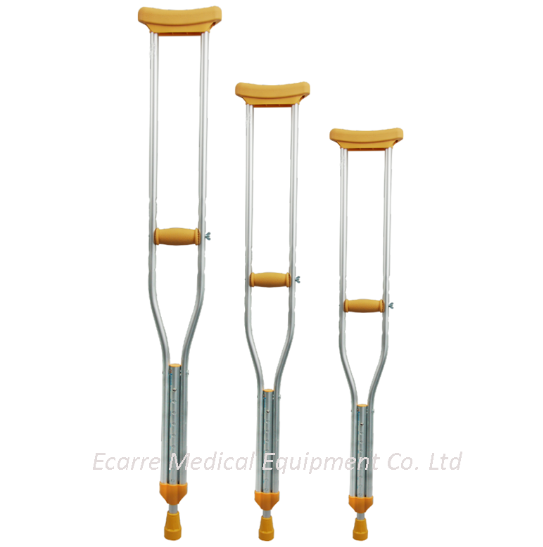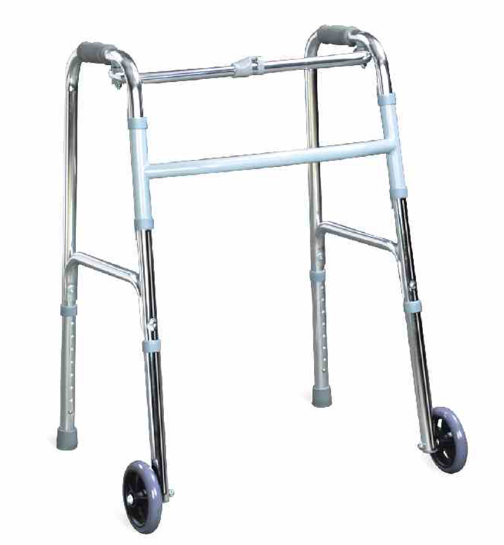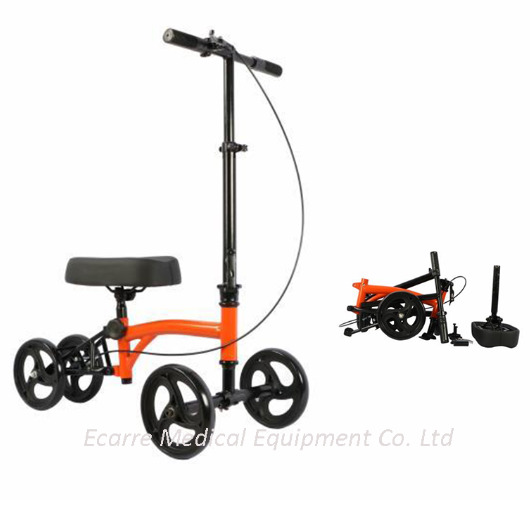Knee Walker VS Crutch: What They Are Differencs?
Knee walker and crutche are two common mobility aids used by people recovering from foot or ankle injuries. While they both serve the same purpose, there are several differences between the two that you should consider when choosing which one to use. In this article, we will compare knee walkers and crutches in terms of comfort, weather resistance, mobility, everyday use, and price.
Comfort
One of the main differences between a knee walker and a crutch is the level of comfort they provide. The medical knee walker is designed to support the injured leg and allow the user to place their knee on a cushioned platform. This takes the weight off the foot and ankle, reducing pressure and pain. Crutch, on the other hand, requires the user to bear the weight on their hands and arms, which can be uncomfortable and cause fatigue.
Weather Resistance
Another factor to consider is weather resistance. The medical knee walker is generally better suited to outdoor use, as they have wheels that allow for easy maneuverability on uneven terrain. In contrast, crutch walking stick can be difficult to use in wet or slippery conditions, and may even pose a safety hazard.
Mobility
When it comes to mobility, the medical knee walker is generally easier to use than the crutch. The medical knee walker allows for greater stability and balance, which can be particularly helpful for those with limited mobility or who are recovering from more severe injuries. Regardless of the type of crutches, the crutch requires a significant amount of upper body strength and balance, which can be challenging for some users.
Everyday Use
The medical knee walker is generally more versatile than crutches when it comes to everyday use. It can be used indoors and outdoors, and can even be used to navigate narrow spaces like hallways and doorways. Crutch, on the other hand, can be difficult to maneuver in tight spaces and may be more cumbersome to use in certain situations.
Price
Finally, price is another important factor to consider. The medical knee walker tends to be more expensive than crutches, but they may be worth the investment if you require a higher level of comfort and mobility.
Crutch is a more affordable option and maybe a better choice if you only need a temporary mobility aid.
Crutch is a more affordable option and maybe a better choice if you only need a temporary mobility aid.
Is A Knee Walker Better than Crutches?
Whether a knee walker is better than crutches depends on the individual's specific needs and circumstances. The medical knee walker can provide greater comfort and stability, as it allows the user to place their injured leg on a cushioned platform and use their other leg to propel themselves forward. It can also be easier to use on uneven terrain and in tight spaces.
Crutch, on the other hand, requires more upper body strength and balance, but it may be a more affordable option for those who only need a temporary mobility aid.
Additionally, crutch can be more versatile than knee walkers in certain situations, such as when navigating stairs or in situations where a knee walker may be too bulky.
Ultimately, the choice between a knee walker and crutches comes down to the individual's personal preferences, the severity of their injury, and their mobility needs. It's important to consult with a medical professional to determine which option is best for your specific situation.
Crutch, on the other hand, requires more upper body strength and balance, but it may be a more affordable option for those who only need a temporary mobility aid.
Additionally, crutch can be more versatile than knee walkers in certain situations, such as when navigating stairs or in situations where a knee walker may be too bulky.
Ultimately, the choice between a knee walker and crutches comes down to the individual's personal preferences, the severity of their injury, and their mobility needs. It's important to consult with a medical professional to determine which option is best for your specific situation.
Is A Walker More Stable than Crutches?
In general, a walker is considered to be more stable than a crutch. This is because a walker has four points of contact with the ground, whereas crutches only have two. The wider base of support provided by a walker can help to improve balance and reduce the risk of falls.
Furthermore, a walker may be easier to use for people who have difficulty bearing weight on one or both legs, as it allows them to distribute their weight evenly across their arms and legs. Crutch, on the other hand, requires the user to bear more weight on their hands and wrists, which can be uncomfortable or even painful for some people.
However, it's important to note that the choice between a walker and crutches will depend on the individual's specific needs and abilities. Some people may find that crutch is more suitable for their needs, particularly if they need to navigate narrow spaces or climb stairs. It's always best to consult with a healthcare professional to determine which mobility aid is best for you.
Furthermore, a walker may be easier to use for people who have difficulty bearing weight on one or both legs, as it allows them to distribute their weight evenly across their arms and legs. Crutch, on the other hand, requires the user to bear more weight on their hands and wrists, which can be uncomfortable or even painful for some people.
However, it's important to note that the choice between a walker and crutches will depend on the individual's specific needs and abilities. Some people may find that crutch is more suitable for their needs, particularly if they need to navigate narrow spaces or climb stairs. It's always best to consult with a healthcare professional to determine which mobility aid is best for you.
Conclusion
All in all, when choosing between knee walkers and crutches, it's important to consider factors like comfort, weather resistance, mobility, everyday use, and price. While both options have their benefits and drawbacks, the choice ultimately comes down to what will best suit your individual needs and preferences.










